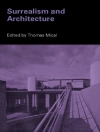This book offers practical solutions to achieving sustainable urban
design and development, and helps designers communicate these
solutions effectively to planners, developers and policy makers.
Addressing sustainability issues in relation to the design and
planning of the urban environment is a complex, multi-disciplinary
issue and solutions never arrive from a single perspective. The
authors use design as a facilitating factor to consider when and by
whom decisions that contribute to sustainability are made, and
through three major city-centre case studies – London, Manchester
and Sheffield – they consider social, environmental and
economic factors and examine their relationship to the
decision-making process.
Designing Sustainable Cities begins by identifying the
key processes and lead decision-makers. The following chapters
develop an understanding of the dimensions of sustainability,
presenting the tools by which the dimensions can be analysed. Later
chapters illustrate the trade-offs and the relationships between
the dimensions of sustainability – with case study examples – as
well as the use of IT in making design decisions. Finally, the book
makes recommendations for future approaches to the design,
development and on-going management of urban environments.
Designing Sustainable Cities covers:
* latest research data on the urban environment and the
interaction between social, economic and environmental issues
* methods of understanding the context in which urban design
takes place
* guidance on the codes of practice
* process maps to help understand the context, make trade-offs
and develop design solutions that allow for change
* methods for testing the consequences of design proposals and
monitoring outcomes.
Jadual kandungan
The Vivacity Team.
Acknowledgements.
Preface.
Introduction.
Section 1 The urban design process.
Introduction.
1 The urban design decision-making process: definitions and
issues.
2 Urban design decision-making process: case studies.
3 Urban design decision-making process: a new approach.
Overview.
Section 2 Environmental sustainability and city-centre
living.
Introduction.
4 Urban environmental quality.
5 The sensory city.
6 Inclusive design of ‘away from home’ toilets.
Overview.
Section 3 Urban form and social sustainability for
city-centre living.
Introduction.
7 Housing in the twentieth-century city.
8 Designing safe residential areas.
9 Crime and urban design: an evidence-based approach.
Overview.
Section 4 Diversity and mixed use for city-centre
living.
Introduction.
10 Urban sustainability: mixed use or mixed messages?
11 The generation of diversity.
Overview.
Section 5 Supporting urban design decision-making:
ICT.
Introduction.
12 IT Infrastructure for supporting multidisciplinary urban
planning.
Section 6 Viva City2020: artists-in-residence.
Introduction.
13 The role of art practice within Viva City2020.
14 Present in public space.
Overview.
15 The ongoing sustainable city endeavour.
Appendices.
1 Viva City industry partners and collaborators.
2 Explaining space syntax.
Index.
Mengenai Pengarang
Rachel Cooper – Lancaster University
Graeme Evans – London Metropolitan University
Christopher T Boyko – Lancaster University












